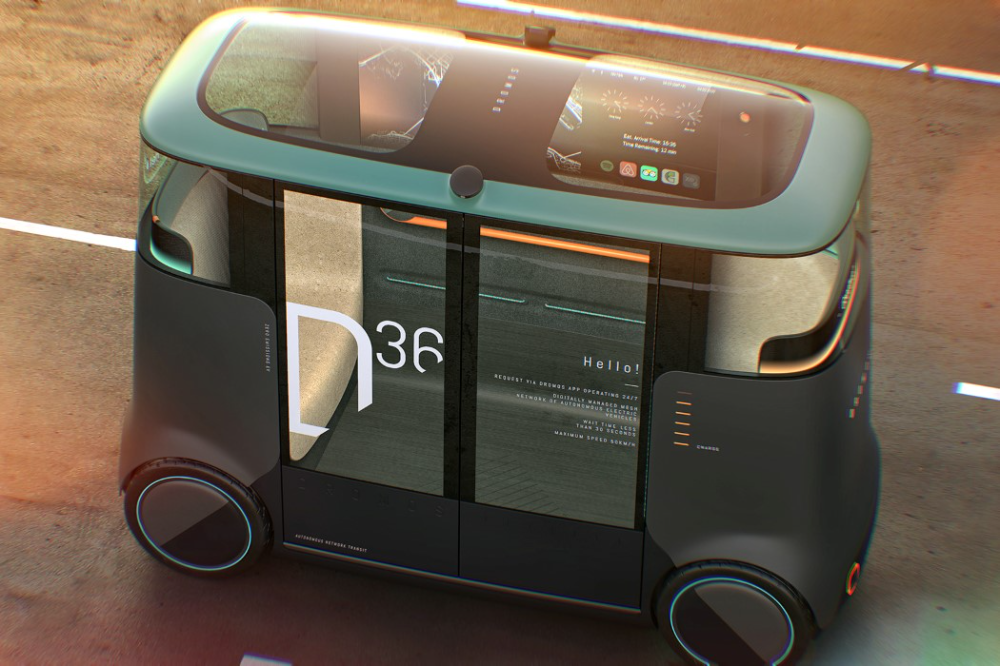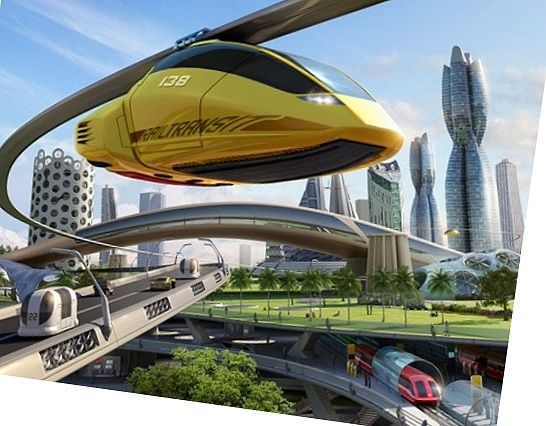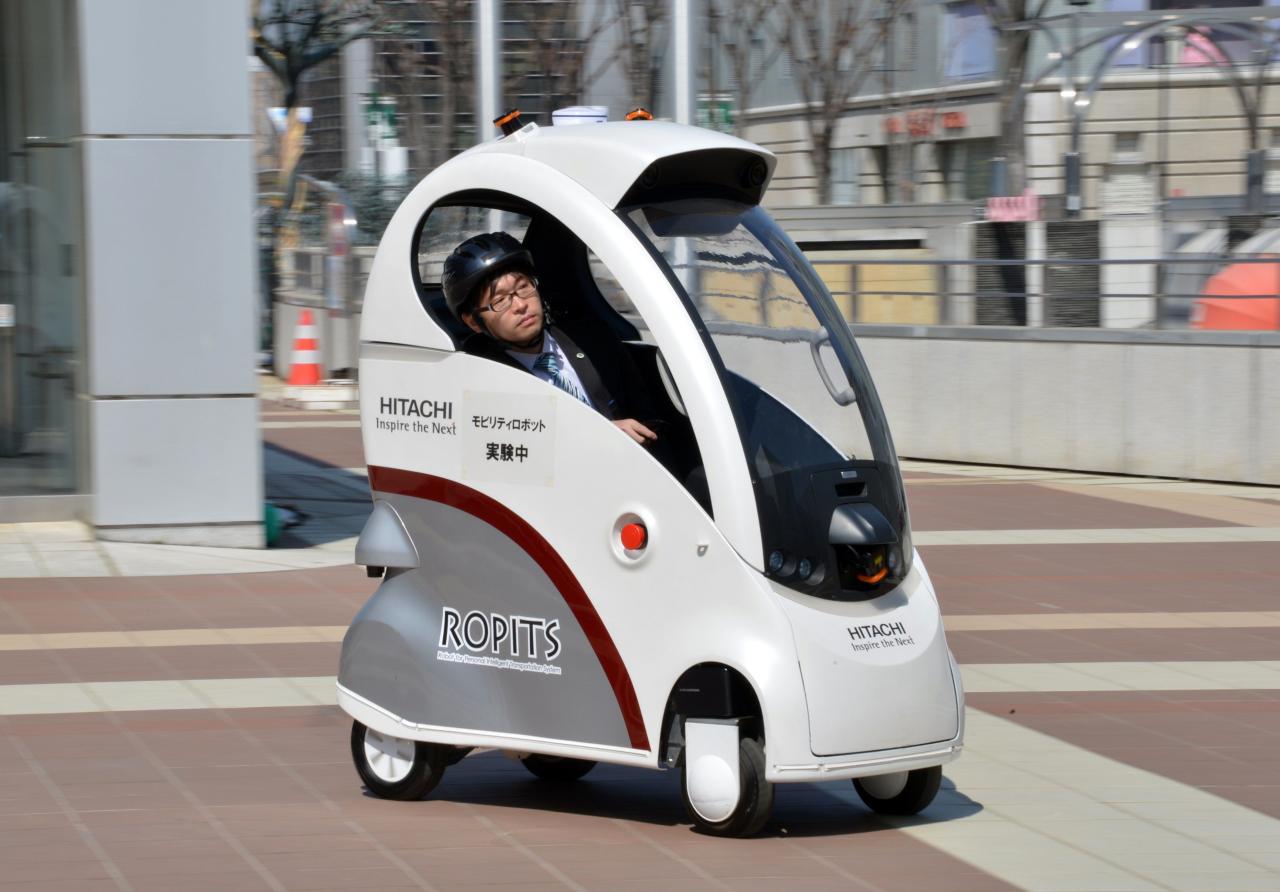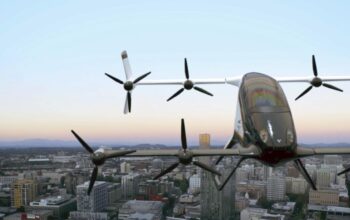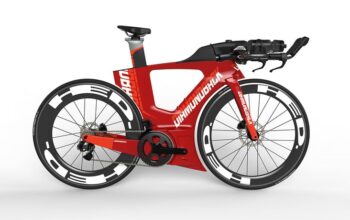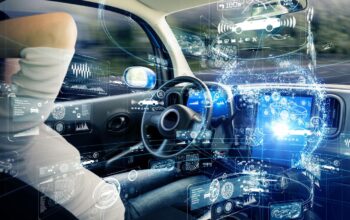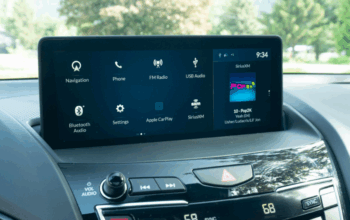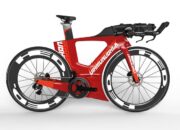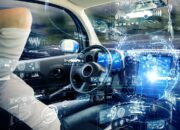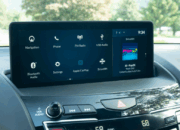The way we move, both individually and collectively, is on the cusp of an unprecedented transformation. For over a century, the internal combustion engine automobile has dominated personal transport, shaping our cities, lifestyles, and even our global economy. However, a confluence of technological breakthroughs, environmental imperatives, and evolving societal demands is rapidly paving the way for a revolutionary new era. This article explores the multifaceted future of personal transport, delving into the core innovations set to redefine human mobility, from advanced vehicle technologies and infrastructure shifts to fundamental changes in ownership models and urban planning.
The Drivers of Change: Why Now?
The push for a new paradigm in personal transport isn’t arbitrary; it’s fueled by several urgent and interconnected global challenges and opportunities. Understanding these drivers is crucial to appreciating the scope of the coming transformation.
A. Environmental Imperatives
Climate change and urban air quality concerns are perhaps the most potent catalysts for change. Traditional vehicles, heavily reliant on fossil fuels, are major contributors to greenhouse gas emissions and particulate matter, leading to:
- Global Warming: Emissions accelerate climate change, demanding a rapid shift to zero-emission alternatives.
- Urban Air Pollution: Poor air quality in cities directly impacts public health, driving the need for cleaner vehicle technologies.
- Resource Depletion: Finite fossil fuel resources necessitate the exploration of sustainable energy sources for transport.
This has spurred governments worldwide to set ambitious emissions targets, incentivize electric vehicle adoption, and invest in renewable energy infrastructure.
B. Urbanization and Congestion
More than half of the world’s population now lives in urban areas, a figure projected to rise significantly. This rapid urbanization brings with it immense challenges for transport systems:
- Traffic Congestion: Gridlock wastes time and fuel, impacts productivity, and increases stress.
- Limited Space: Growing populations demand efficient use of finite road and parking space.
- Infrastructure Strain: Existing transport networks struggle to cope with increasing demand.
New transport solutions must address these urban challenges by offering more efficient, space-saving, and integrated mobility options.
C. Technological Advancements
We are in an era of exponential technological growth, with breakthroughs in various fields directly impacting transport:
- Artificial Intelligence (AI) and Machine Learning (ML): Powering autonomous driving systems, intelligent traffic management, and predictive maintenance.
- Battery Technology: Rapid improvements in energy density, charging speed, and cost are making electric vehicles increasingly viable.
- Sensor Technology: Lidar, radar, and advanced cameras provide the “eyes” and “ears” for autonomous vehicles.
- Connectivity (5G/IoT): Enabling real-time communication between vehicles, infrastructure, and smart devices.
- Material Science: Lighter, stronger, and more sustainable materials are improving vehicle efficiency and safety.
These innovations are not only making new forms of transport possible but also making them safer, more efficient, and more desirable.
D. Evolving Consumer Preferences
Younger generations, in particular, are showing different attitudes towards car ownership. Factors include:
- Shift from Ownership to Access: A growing preference for on-demand mobility services (ride-hailing, car-sharing) over traditional vehicle ownership, especially in urban areas.
- Desire for Seamless Experiences: Expectations for integrated, convenient, and personalized transport solutions.
- Environmental Consciousness: A willingness to choose sustainable options, even if they require a behavioral shift.
These changing preferences are pushing manufacturers and service providers to rethink business models and offer more flexible mobility solutions.
The Pillars of Future Personal Transport
The future of personal transport will rest on several interconnected technological and conceptual pillars, each undergoing rapid development.
A. Electrification: The Green Revolution on Wheels
The shift from fossil fuels to electricity is arguably the most fundamental change. Electric Vehicles (EVs), encompassing Battery Electric Vehicles (BEVs), Plug-in Hybrid Electric Vehicles (PHEVs), and Fuel Cell Electric Vehicles (FCEVs), are central to achieving zero-emission mobility.
-
Battery Electric Vehicles (BEVs):
- Advantages: Zero tailpipe emissions, quieter operation, instant torque, lower running costs due to cheaper electricity and fewer moving parts.
- Challenges: Range anxiety (though improving rapidly), charging infrastructure availability, battery production and recycling, upfront cost (decreasing).
- Innovations: Solid-state batteries promise higher energy density and faster charging; silicon-anode batteries for improved performance; vehicle-to-grid (V2G) technology allowing EVs to feed power back to the grid.
-
Plug-in Hybrid Electric Vehicles (PHEVs):
- Advantages: Offer flexibility with an electric range for daily commutes and a gasoline engine for longer trips, reducing range anxiety during the transition.
- Role: Serve as a bridge technology, allowing drivers to experience electric mobility without fully committing to a BEV.
-
Fuel Cell Electric Vehicles (FCEVs):
- Advantages: Zero emissions (water vapor), quick refueling times comparable to gasoline cars, longer ranges than many BEVs.
- Challenges: High cost of hydrogen production and distribution infrastructure, scarcity of hydrogen refueling stations.
- Potential: Ideal for heavy-duty transport and potentially long-distance personal vehicles if infrastructure scales.
The rapid expansion of charging networks, including ultra-fast chargers and potentially inductive (wireless) charging, will be critical to accelerating EV adoption.
B. Autonomy: The Driverless Revolution
Autonomous Vehicles (AVs), or self-driving cars, promise to fundamentally change how we use vehicles, enhance safety, and potentially revolutionize urban planning. AVs are categorized into levels of autonomy, from Level 0 (no automation) to Level 5 (full automation in all conditions).
- Level 2/2+ (Partial Automation): Current mainstream ADAS features like adaptive cruise control and lane-keeping assist, requiring driver supervision.
- Level 3 (Conditional Automation): The vehicle handles most driving tasks in specific conditions, but the driver must be ready to take over. This is a complex transition point, both technically and legally.
- Level 4 (High Automation): The vehicle can operate fully autonomously within a defined operational design domain (ODD), such as specific geofenced areas or weather conditions, without human intervention.
- Level 5 (Full Automation): The vehicle can operate fully autonomously in all driving conditions, identical to human capabilities.
Impact of Autonomy:
- Safety: The potential to drastically reduce accidents caused by human error.
- Efficiency: Optimized traffic flow, reduced congestion, and more efficient use of road space.
- Accessibility: Providing mobility for individuals unable to drive (elderly, disabled).
- Productivity: Passengers can work, relax, or entertain themselves during commutes.
- Urban Design: Less need for vast parking lots, potentially freeing up valuable urban land.
Challenges include regulatory frameworks, public acceptance, ethical dilemmas (e.g., in accident scenarios), and the immense technical complexity of real-world scenarios.
C. Connectivity: The Internet of Moving Things
The proliferation of high-speed wireless networks (like 5G) and the Internet of Things (IoT) will transform vehicles into highly connected, data-generating nodes. This connectivity enables:
- Vehicle-to-Everything (V2X) Communication:
- V2V (Vehicle-to-Vehicle): Cars communicate directly with each other to share data on speed, direction, braking, and potential hazards, preventing collisions and optimizing traffic flow.
- V2I (Vehicle-to-Infrastructure): Vehicles communicate with smart road infrastructure (traffic lights, road sensors, parking garages) to optimize routes, receive real-time traffic updates, and find parking.
- V2P (Vehicle-to-Pedestrian): Vehicles can detect and communicate with pedestrians and cyclists, enhancing safety for vulnerable road users.
- V2N (Vehicle-to-Network): Communication with cloud services for navigation, infotainment, remote diagnostics, and over-the-air (OTA) software updates.
- Enhanced Infotainment: Seamless streaming, augmented reality navigation, and personalized content.
- Predictive Maintenance: Vehicles can self-diagnose issues and alert owners or service centers proactively.
- Data-Driven Services: Enabling new business models based on aggregated mobility data.
Hyper-connectivity is essential for the safe and efficient operation of autonomous vehicles and intelligent transport systems.
D. Shared Mobility: Access Over Ownership
The traditional model of individual car ownership is being challenged by the rise of shared mobility services, particularly in urban environments. This shift is driven by cost, convenience, and a desire to reduce environmental impact.
- Ride-Hailing: Services like Uber and Grab (or Lyft) provide on-demand private transportation, reducing the need for personal vehicles for occasional trips.
- Car-Sharing: Programs like Zipcar or various peer-to-peer platforms allow users to rent vehicles for short periods, reducing ownership burdens.
- Micromobility: Electric scooters, e-bikes, and shared bicycles offer flexible and often faster alternatives for short urban distances, reducing reliance on cars for last-mile connectivity.
- Robotaxis: The future integration of autonomous vehicles into ride-hailing fleets promises even lower costs and greater availability, potentially making private car ownership economically unfeasible for many urban dwellers.
This shift from ownership to access can lead to fewer vehicles on the road, reduced parking demand, and more efficient use of existing transport assets.
Redefining Vehicle Design and Form Factors
The technological shifts will inevitably lead to radical changes in how personal transport vehicles look, feel, and function.
A. Purpose-Built Autonomous Vehicles
Once the driver is no longer necessary, vehicle interiors can be completely rethought. We might see:
- Lounge-like Interiors: Facing seats, desks, and entertainment systems, transforming travel time into productive or leisure time.
- Modular Designs: Interiors that can be easily reconfigured for different purposes – work, relaxation, family travel, or even freight.
- Optimized for Specific Services: Vehicles designed solely for ride-sharing (e.g., with easy-to-clean materials) or delivery services.
Exterior designs could also become more aerodynamic and distinctive, freed from traditional design constraints imposed by human drivers.
B. Micromobility Solutions
For short urban distances, smaller, more agile vehicles will gain prominence:
- Advanced E-bikes and E-scooters: With improved range, safety features, and durability.
- Personal Mobility Devices: Single-person pods or enclosed two-wheelers offering weather protection and stability.
- Modular Urban Vehicles: Compact, customizable vehicles that can adapt to varying passenger or cargo needs within congested city centers.
These will cater to the “last mile” problem, connecting public transport hubs to final destinations efficiently.
C. Vertical Mobility: Flying Vehicles?
While still highly speculative for widespread personal transport, electric Vertical Take-Off and Landing (eVTOL) aircraft, often referred to as “flying cars” or “air taxis,” are under active development.
- Concept: Small, electric aircraft capable of vertical takeoff and landing, designed for short-distance urban and inter-city travel.
- Potential: Alleviating ground congestion, significantly reducing travel times for specific routes.
- Challenges: Air traffic control complexity, noise pollution, safety regulations, public acceptance, and extremely high initial costs.
While unlikely to replace ground transport entirely, eVTOLs could offer a premium, rapid mobility solution for certain scenarios.
Infrastructure: The Foundation of Future Mobility
Advanced vehicles require equally advanced infrastructure. The transformation of personal transport is inseparable from the evolution of our supporting networks.
A. Smart Road Networks
Roads will no longer be passive surfaces but active participants in the mobility ecosystem:
- Embedded Sensors: Real-time monitoring of traffic flow, road conditions, and hazards.
- Dynamic Lane Management: Adapting lane usage based on real-time traffic demand.
- Optimized Traffic Signals: AI-controlled lights that minimize congestion and wait times.
- Dedicated AV Lanes: Separating autonomous vehicles from human-driven ones for safety and efficiency.
B. Ubiquitous Charging and Refueling Infrastructure
The transition to EVs demands a robust and accessible charging infrastructure:
- Public Charging Networks: Rapid expansion of fast-charging stations along highways and in urban centers.
- Workplace and Home Charging: Incentives and support for installing chargers in residential and commercial buildings.
- Inductive Charging: Wireless charging pads embedded in roads or parking spots, allowing vehicles to charge while stationary or even in motion.
- Battery Swapping Stations: For some EV models, allowing rapid exchange of depleted battery packs for fully charged ones.
- Hydrogen Refueling Stations: For FCEVs, requiring a completely new dedicated infrastructure.
C. Integrated Mobility Hubs
Cities will develop multi-modal transport hubs where different forms of mobility converge:
- Seamless Transfers: Enabling easy transitions between public transport (trains, buses), shared autonomous vehicles, micromobility options, and traditional cars.
- Smart Parking: Integrated systems for finding and reserving parking spaces, especially for AV fleets.
- Package Delivery Drones/Robots: Integrating last-mile delivery services with passenger transport.
These hubs will be designed for efficiency, convenience, and a smooth user experience.
Societal and Economic Impacts
The future of personal transport will have far-reaching effects on our societies, economies, and daily lives.
A. Economic Shifts
- New Industries and Jobs: Growth in EV manufacturing, battery technology, AI development, sensor production, and mobility service operation.
- Decline of Traditional Industries: Potential job displacement in fossil fuel industries, traditional car manufacturing (especially ICE components), and professional driving roles (taxi, truck drivers).
- Investment Flows: Massive investments required in charging infrastructure, smart road systems, and autonomous vehicle R&D.
- Insurance Industry Changes: Shifting liability from drivers to software and manufacturers, potentially reducing accident rates and changing premium structures.
- Real Estate Revaluation: Reduced need for parking spaces could free up valuable urban land for housing, parks, or commercial development.
B. Urban Reconfiguration
- Less Congestion and Pollution: Leading to healthier, more livable cities.
- Redesigned Public Spaces: Streets could be reimagined to prioritize pedestrians, cyclists, and green spaces, rather than just vehicle throughput.
- Sprawl vs. Density: While efficient autonomous vehicles might enable longer commutes, the desire for sustainable, walkable cities might favor increased density.
- Improved Public Transport: Autonomous fleets could enhance the efficiency and reach of public transit, making it a more attractive option.
C. Personal Freedom and Accessibility
- Enhanced Mobility for All: Autonomous vehicles could provide unprecedented freedom for the elderly, disabled, and those unable to drive, expanding their participation in society.
- Reduced Stress: Eliminating the burden of driving, allowing for more productive or relaxing commute times.
- Privacy Concerns: The collection of vast amounts of data by connected and autonomous vehicles raises significant privacy issues that will need robust regulatory frameworks.
- Cybersecurity Risks: The increasing connectivity makes vehicles vulnerable to cyberattacks, requiring stringent security measures.
Navigating the Road Ahead: Challenges and Opportunities
While the future of personal transport is exciting, it’s not without significant hurdles.
A. Regulatory Frameworks
Governments worldwide must develop comprehensive regulations covering:
- Safety Standards: For autonomous vehicles and new mobility devices.
- Liability: Who is responsible in the event of an accident involving an AV?
- Data Privacy: How is vehicle data collected, stored, and used?
- Ethical Guidelines: For AV decision-making in complex situations.
- Interoperability: Ensuring different charging standards and communication protocols can work together.
B. Public Acceptance and Trust
Overcoming public skepticism about autonomous vehicles, adapting to new ownership models, and embracing micromobility solutions will require:
- Education: Informing the public about the benefits and safety of new technologies.
- Demonstrated Reliability: Consistent, safe performance of autonomous vehicles.
- Affordability: Ensuring that new mobility options are accessible to a broad range of income levels.
C. Economic Disruption and Workforce Transition
Managing the transition for industries and workers impacted by the shift from traditional manufacturing and driving roles will be crucial. This involves:
- Retraining Programs: Equipping workers with new skills for emerging industries.
- Social Safety Nets: Supporting those whose jobs are displaced.
D. Infrastructure Funding
The immense investment required for charging networks, smart roads, and new urban mobility hubs will necessitate innovative funding models, likely involving public-private partnerships.
Conclusion
The future of personal transport is not a single technology but a complex ecosystem of interconnected innovations. It’s a future where vehicles are electric, increasingly autonomous, and seamlessly connected; where mobility is often a service rather than a possession; and where urban spaces are reimagined for greater livability and sustainability. This is a profound paradigm shift, moving beyond merely replacing one type of vehicle with another to fundamentally rethinking how people and goods move within our societies.
While significant challenges remain, the impetus for change – driven by environmental urgency, urban pressures, and technological prowess – is undeniable. Governments, industries, and consumers must collaborate to navigate this transition effectively, ensuring that the promise of cleaner, safer, more efficient, and more accessible mobility is realized for all. The journey has begun, and the road ahead promises to be as transformative as the invention of the automobile itself. Our personal journeys are about to become radically different, shaping not just how we travel, but how we live.

